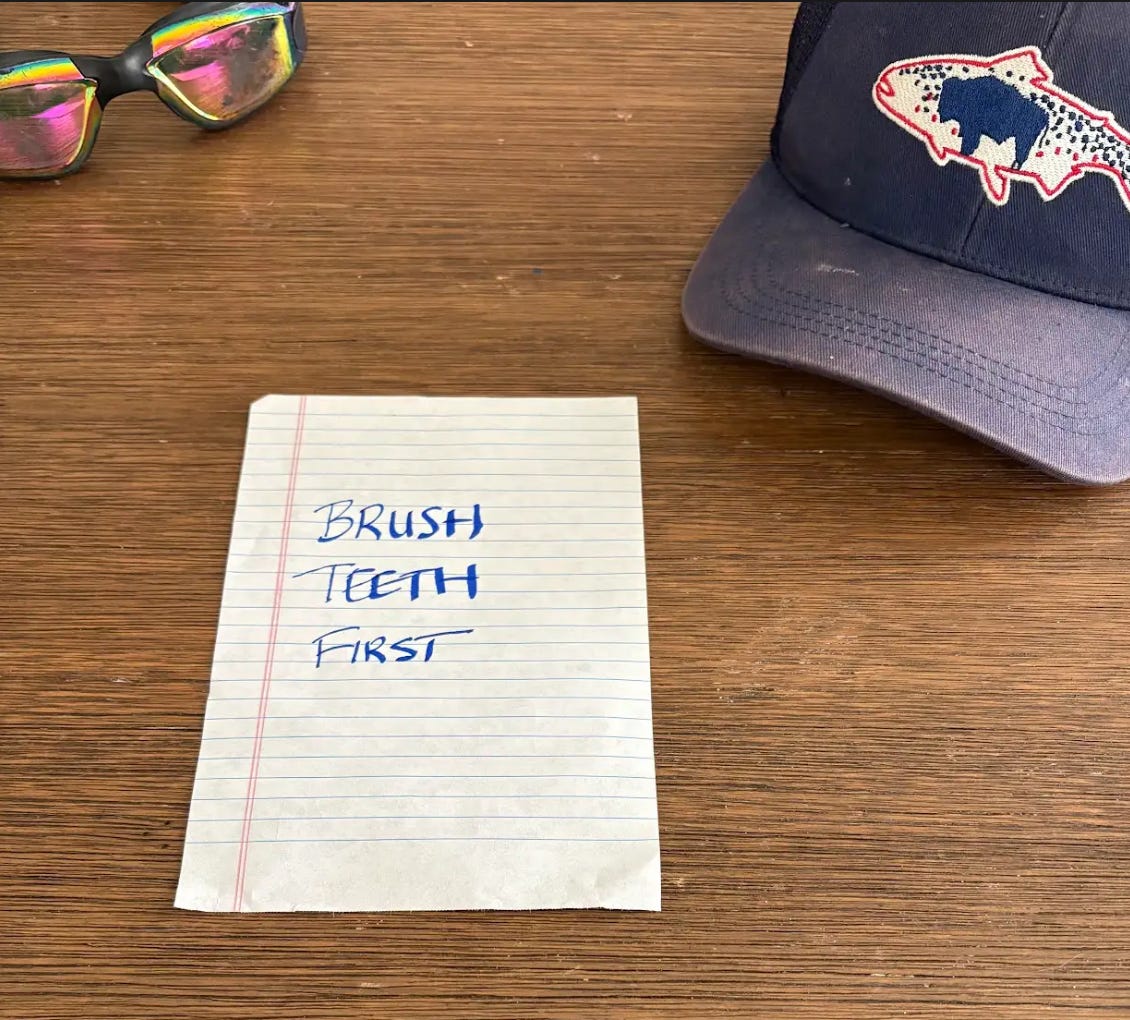“Did you brush your teeth?”
At some point during the school year—I'm not even sure when—my kids began watching TV in the morning before their basic hygiene. At first, it felt harmless. But then each morning I asked: “did you brush your teeth?” Every single day I’d say, “pause the TV and go brush your teeth.” Sometimes they listened, but mostly they didn’t. Mornings turned into full-on negotiations.
I didn’t yell and I didn’t threaten. I simply decided to remove the TV remote. And in its place on the coffee table, I put a sticky note: "Brush your teeth."
That’s it.
The next morning when my son came downstairs he said, “mom, where’s the remote?” And I calmly replied, “what does the note say? brush your teeth first and then watch TV.”
I did that for the next few days, and within a week, they were brushing their teeth every morning before coming downstairs. Now it’s a non-issue. They no longer offend me or their friends with rank breath.
I spent weeks feeling frustrated, thinking, “it’s not that hard you guys, just brush your teeth before you come downstairs!”
Stopping versus starting (when it comes to behavior, there’s a difference)
BJ Fogg’s Behavior Grid lays this out beautifully: there are different types of behaviors, and each one requires its own design strategy. Stopping a behavior (“stop watching TV”) is fundamentally different than starting a behavior (“go brush your teeth”). Stopping feels like loss, and can often feel like punishment because it puts your attention on what’s wrong or bad. Or it might feel like deprivation, which our brains really hate. When you deprive yourself of something familiar or comforting, your brain flags it as a danger signal.
But doing something puts your energy into creation. Your brain registers it as progress when you start something. It feels productive.
So rather than asking my kids to not do something, I asked them to do something. And the thing I asked them to do - brush their teeth - I made easier (with a reminder note) while I made watching TV harder (by taking away the remote).
When I work with people who want to support healthier habits, I focus on doing something rather than not doing something. Why? Because doing is energy. In a lot of cases, doing can feel empowering. Our brains prefer to do versus not do. If you want to quit smoking, start running. Make it about the running, not the smoking.
If you’re a caregiver trying to help someone quit unhealthy habits, fill in this blank:
For example:
“I want her to stop late night snacking, and I want her to start walking the dog instead.”
“I want him to avoid screens before bed, and I want him to start reading instead.”
In my case, I wanted my kids to stop watching TV and I want them to start brushing their teeth each morning.
And then, ask yourself: How can I design for the start (do) to happen rather than the stop (not do)?
The answer—the one that provides the highest ROI—is to make the desired (the start) behavior easier to do and the undesired (stop) behavior harder to do.
I made brushing teeth easier (a reminder note) and watching TV harder (I removed the remote).
That’s behavior change gold.
Tiny changes. “Do” energy. Designed environments.
This is the heart of health behavior design—not willpower, but smart structure. Not discipline, but deliberate design.
So the next time you want to break a habit—yours or someone else’s—ask yourself:
What behavior can I ask them to do instead?
How can I make that behavior easier than the undesired behavior?
It’s an experiment worth trying in all relationships.
Your story belongs here!
Has something I’ve written sparked a memory or made you think about someone you care for? If you’ve had a meaningful experience supporting a loved one, whether a parent, partner, friend, or child, I invite you to share it. It could be joyful, heartbreaking, messy, or beautifully mundane. This is a space for real voices and real experiences, and I’d be honored to include yours in a future Substack post!
👉Click here to share your story.
Interested in my work? Let’s connect!
📲 Follow me on LinkedIn for more insights and behind-the-scenes, or reach out if you’re interested in working together
💌 Reach out to me at drstephhabif@gmail.com for ways to work together
🖥️ Read more on my website





